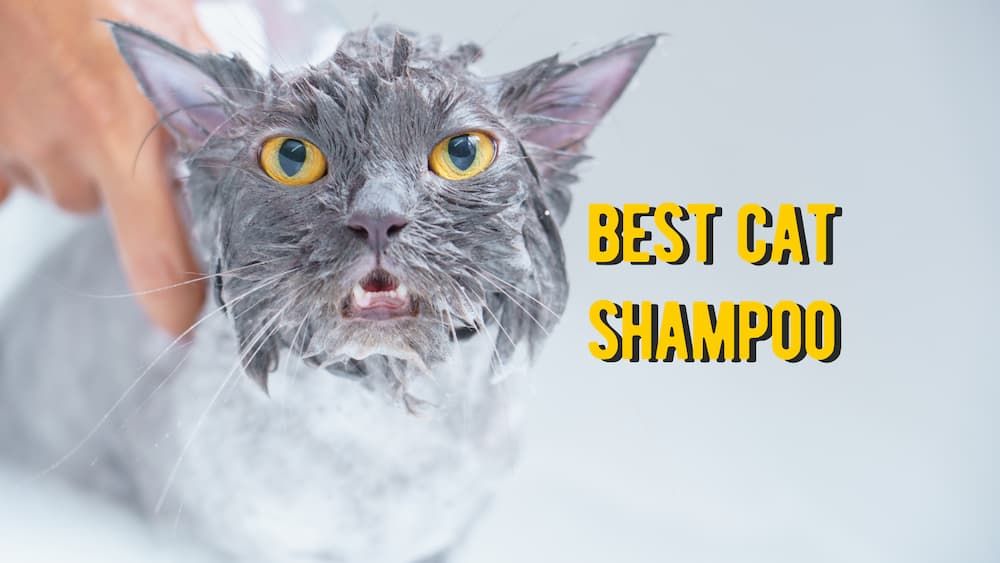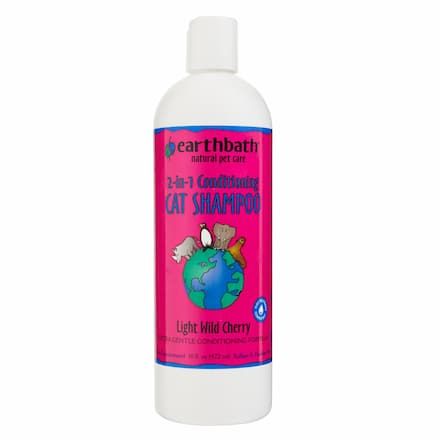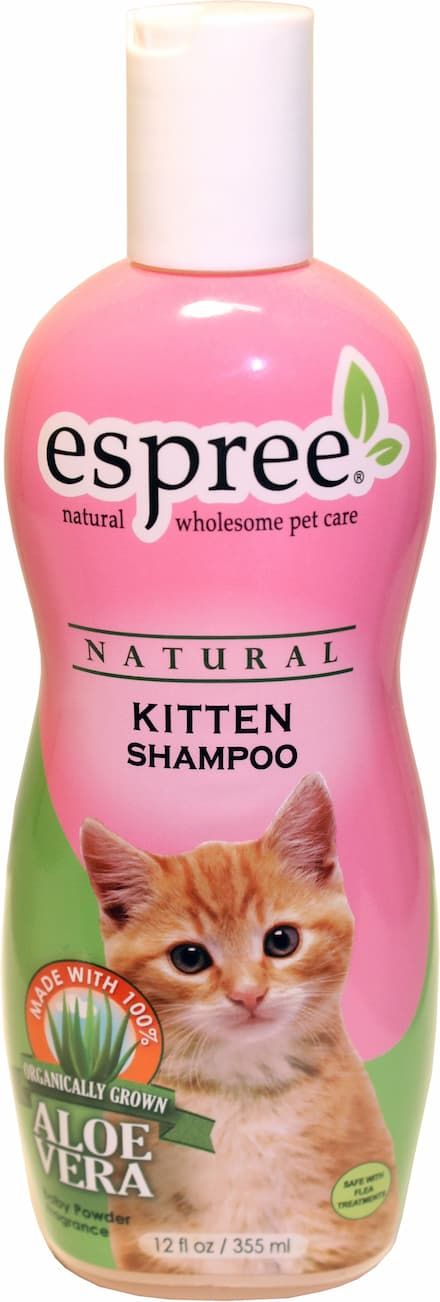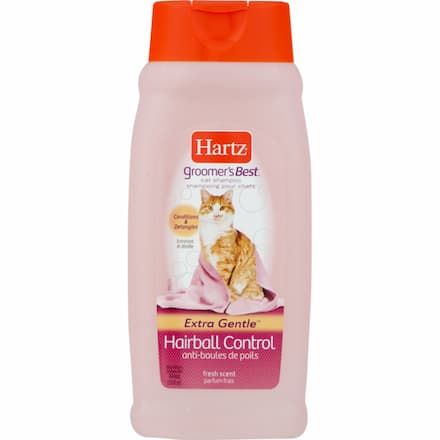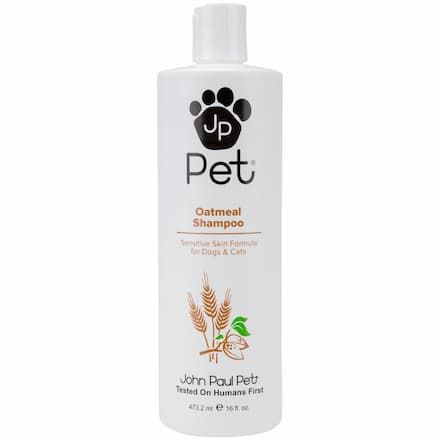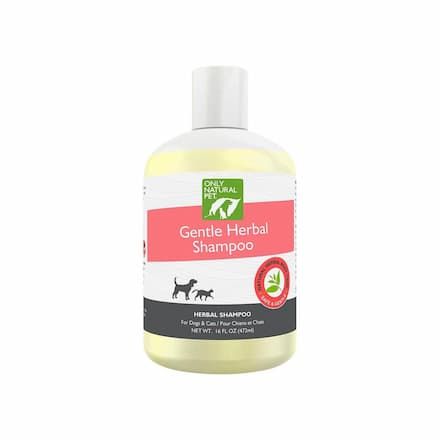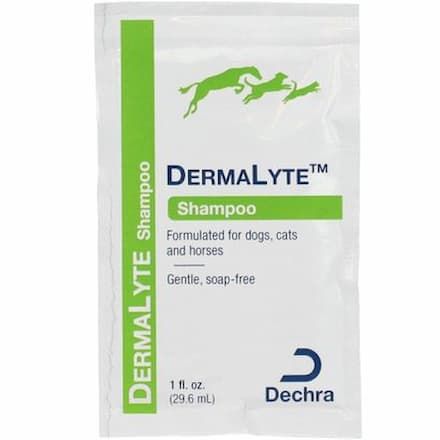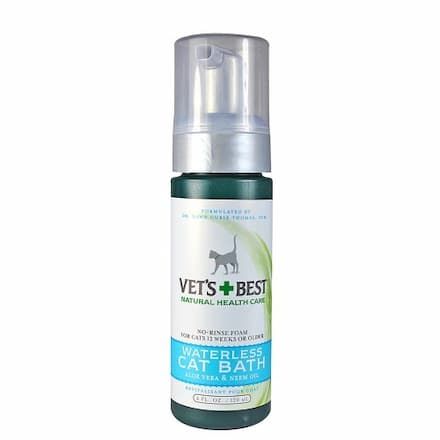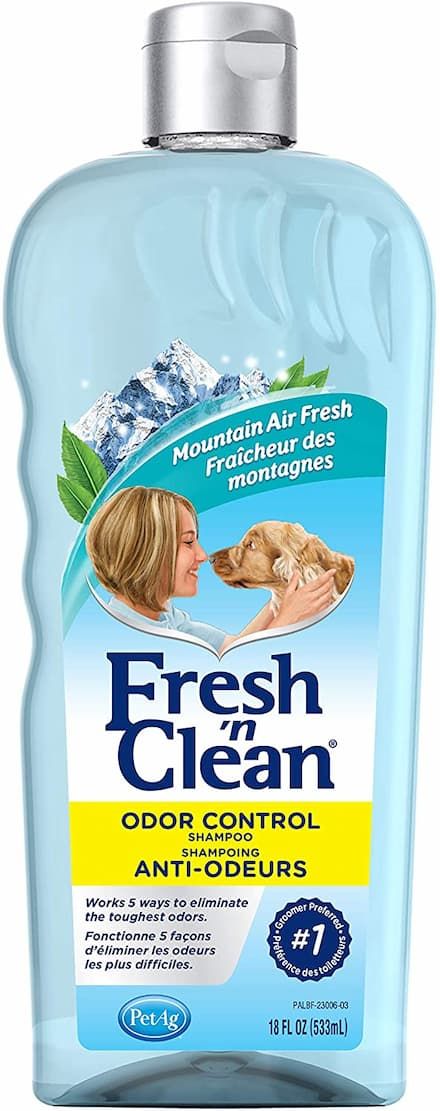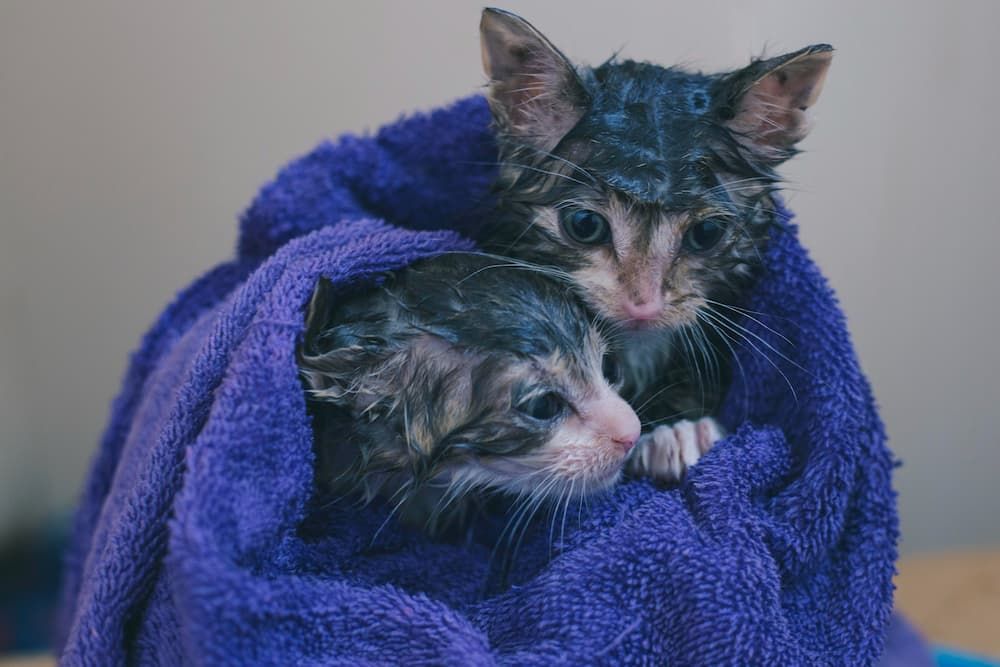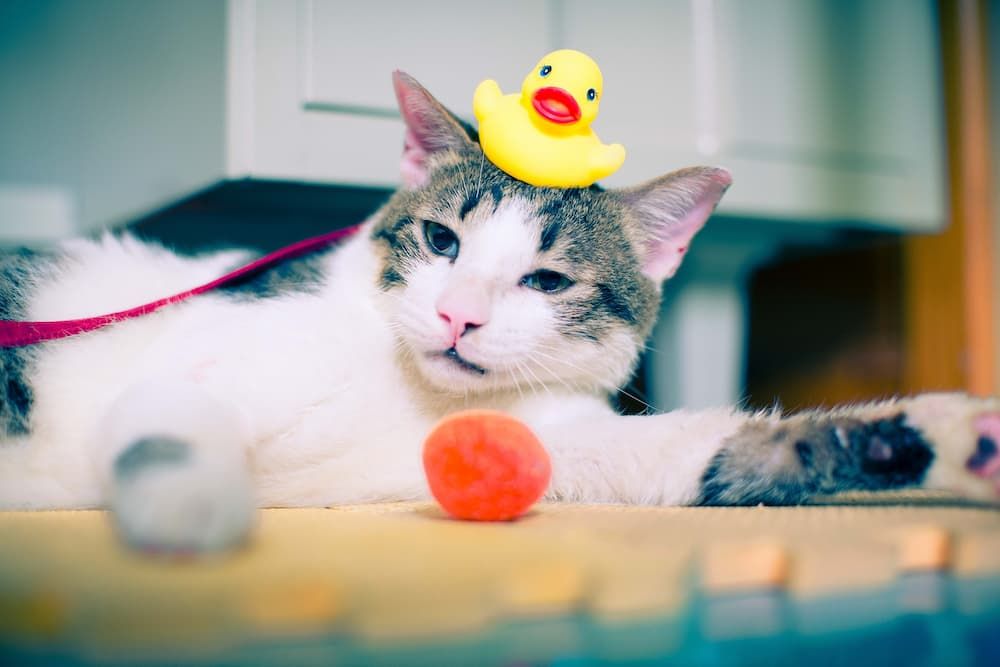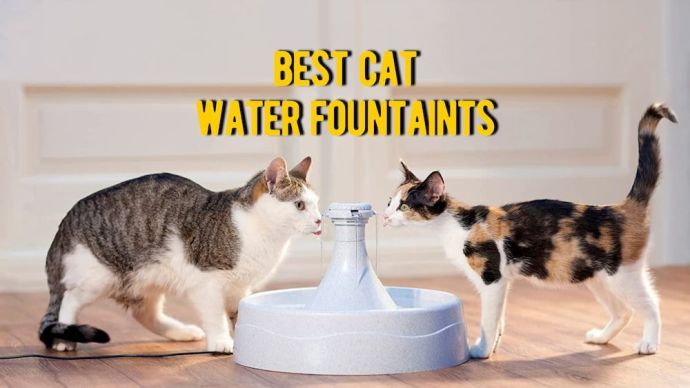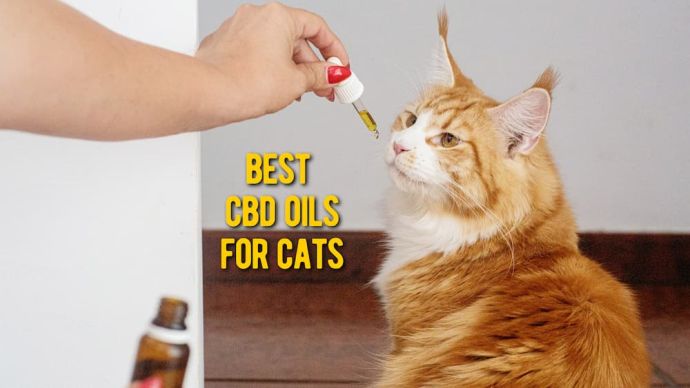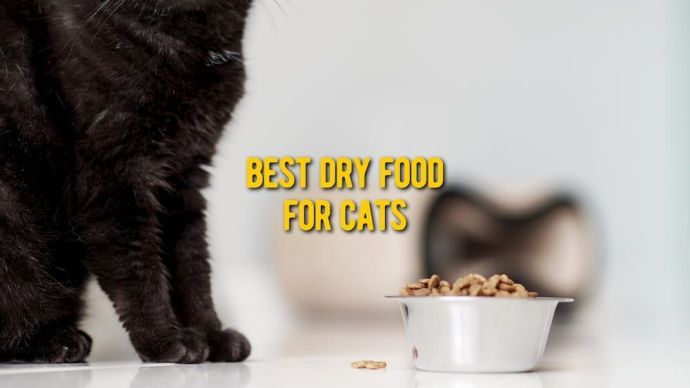The Best Cat Shampoo (Vet Approved Review)
Written by:
Author: Vicki Smirnova
Vicki Smirnova is a professional writer and editor who adores animals and helps readers get along well with their pets. She has been working in digital media for more than 5 years and has great experience writing content about lifestyle, including pets. Vicki specializes in dog health and nutrition, cat feeding, dog training. She is an aquarium lover and is passionate to write about fish care at home. Also, Vicki headed several websites and worked as a news editor.
View all 244 articlesLearn about our editorial process and veterinary review board.
Reviewed by:
Veterinary review
by Dr. Joanna De Klerk
Dr. Joanna de Klerk is a professional Clinical Veterinarian. Member of the Royal College of Veterinary Surgeons UK and a member of the South African Veterinary Association. Graduated with a Master of Science in Tropical Animal Medicine in 2018. Professional author, she has been writing in scientific journals, and also several book series. Joanna loves to enjoy time with her young daughter and family in her free time.
View all 10 articlesLearn about our veterinary review board
Viewed: 2084
Updated on: 12/28/2022
Cats clean their fur every day. They watch their own hygiene. But despite their cleanliness, cats do not like water. Cats’ dislike of water is related to their coat features. The undercoat protects felines from hypothermia and overheating. When you wash your pet, the coat gets wet, and the natural protection disappears. A thermophilic cat instantly gets chilly.
Also, the process of bathing seems strange to the cat. So don’t be surprised when you see a pet trying to escape and avoid the water.
However, in some cases, cats need additional help to be clean, and the owner still needs to bathe them. It may be necessary to bathe a cat if there is a problem with the skin, for example, with some dermatological diseases or the appearance of red spots on the coat. However, the frequency and product should be discussed with veterinary guidance. It is important not to overdo it with the frequency of washing your cat, otherwise, it could lead to dry skin and a coat stripped of its natural oils.
Of course, this does not apply to the show animals, which are bathed before each event. Show cats often need shampoos that help to emphasize the color of the animal. Representatives of long-haired breeds will definitely also need conditioning products. In this case, 2-in-1 products that combine washing and moisturizing properties will be convenient.
If you bathe your cat, be sure to make sure that she is completely dry. After bathing, it is necessary to avoid drafts to prevent your cat from getting cold. It is best to wash your pet only if she is soiled. But, even in this situation, you can avoid a full-fledged bathing session: it is enough to clean the body’s contaminated area, and allow your pet to take care of the rest of her body.
Some cat owners believe that the molting period is a reason for frequent bathing of the animal. But this is not the case. During the molting period, it is necessary to comb the cat often to remove loose hair. This will prevent her from ingesting large quantities of dead hair and forming hairballs.
Hairless cat breeds, such as sphinxes and elves, can be bathed or rinsed once every 1-2 weeks. You need to choose the right shampoo so as not to harm the delicate skin.[1] Chose shampoo for your pet taking into account the type and condition of the coat, and the pet’s health problems. In pet stores today, you can find dozens of brands. This article will look at how to choose the most suitable shampoos and how to properly bathe a pet.
Check out our TOP-3 Choices
Many manufacturers claim they offer the best cat shampoo, which cleans the coat and helps to cope with a certain dermatological problem. We’ve picked up some great options in this article.
Products | Features | Links |
Best Overall | 1. Earthbath 2-in-1 Conditioning Cat Shampoo
| |
#1 Pick for Kittens | 2. Espree Kitten Shampoo
| |
Our Natural Pick | 3. Hartz Groomer's Best Hairball Control Cat Shampoo
|
The Best Cat Shampoo Reviews
1. Earthbath 2-in-1 Conditioning Cat Shampoo
It is made from plant-based ingredients, making it entirely safe for your pet.
The shampoo contains oatmeal extract and aloe vera. These ingredients help fight irritation or itching. Also, the shampoo moisturizes sensitive and dry skin. The safe and gentle formula effectively cleanses your pet’s coat and skin.
This product will not contain any chemical components. It does not contain SLS (sodium lauryl sulfate) and is safe but also useful for sensitive skin. This product deodorizes the fur and gives a pleasant refreshing smell better than ever before.
Pros
Cons
- Contains a blend of natural cleanses.
- Softens the coat and moisturizes skin.
- Safe for use on all animals 6 weeks and older.
- None.
Summary: This item does not contain SLS and has a balanced pH. It is completely safe and also effectively cleanses the cat’s fur.
2. Espree Kitten Shampoo
Espree shampoo for kittens is a mild cleanser that does not cause tears. The formula is hypoallergenic, great for the sensitive skin of kittens. The mild formula includes organic aloe vera, jojoba, and natural coconut oil. These ingredients help to moisturize and condition your little pet’s coat.
Use this hypoallergenic shampoo on your curious kitty. The shampoo copes well, even with serious dirt. This good product will help you train your kitten to bathe from an early age!
Most buyers like the smell of shampoo. Overall, this is a product with brilliant reviews that will help you wash your pet.
Pros
Cons
- Made with jojoba and coconut-based cleansers.
- Made in the USA.
- Helps hydrate your kitty’s skin and coat.
- None.
Summary: The shampoo is not only ideal for the sensitive skin of kittens, it can also be used for bathing nursing or pregnant kitties.
3. Hartz Groomer’s Best Hairball Control Cat Shampoo
This combination helps to comb the hair and get rid of tangles in long-haired cats. It contains all the necessary substances to moisturize and nourish the wool, give it elasticity and accelerate growth. This shampoo restores damaged hair, removes dandruff and nourishes the skin.
Regular use reduces the molting period and has a beneficial effect on the appearance of the animal.
The conditioner and shampoo contains only natural and organic ingredients and does not contain alcohol, soap, detergents, sulfates, color additives, aggressive chemicals or flavors.
Pros
Cons
- Vet recommended.
- Paraben, cruelty-free, sulfate-free, soap-free.
- No sulfates and colors.
- The solution is dilute not concentrated.
Summary: Special conditioning formula aids in reducing hairballs by gently washing away excess, loose hair, making brushing easier.
4. John Paul Pet Oatmeal Shampoo
It is for both dogs and cats. It is able to create a rich foam in the water of any hardness. Thanks to this, a small amount of shampoo to fully wash your pet.
The manufacturer claims that its product adds volume, enhances the brightness of color and shine of the pet’s fur. Pet owners note that combing is faster and easier after shampooing, and the animal’s fur becomes softer and fluffier.
It is made from oatmeal, aloe and chamomile to clean the skin without irritating it. This product is made in the United States from natural products. The John Paul Pet company also donates a portion of the proceeds from each sale to animal and wildlife organizations.
Pros
Cons
- Moisturizes dry, itchy skin with pure oatmeal.
- Helps relieve skin irritations and promote healing.
- Cruelty-free, tested on humans first.
- Cannot remove tough stains.
Summary: Great for cats with skin diseases, it has a beautiful aroma (from almond oil).
5. Only Natural Pet Grooming Shampoo and Conditioner
Only Natural Pet Grooming Shampoo and Conditioner contains soothing and nourishing ingredients for the skin and coat —colloidal oatmeal, aloe vera, and jojoba oil. This flavored formula is 70% organic, and the shampoo and conditioner are 100% free of sodium lauryl sulfate (SLS), sodium Laureth sulfate (SLES), and paraben.
Professional breeders wash their pets with this product before exhibitions. The pH of the formula is optimal for the skin of the animal. The composition is hypoallergenic and safe for cats with sensitive or problematic skin.
Jojoba oil moisturizes and nourishes the coat, aloe vera extracts soften the skin, prevent its peeling and dryness. Colloidal oatmeal is a source of vitamins and moisturizes the skin.
Pros
Cons
- Professional quality, non-toxic products.
- Cruelty-free, natural.
- Organic, SLS, SLES, & paraben free.
- Does not deodorize.
Summary: You can use this shampoo and conditioner for care. This tool is designed to make your pet beautiful and healthy.
6. Dechra DermaLyte
Dechra DermaLyte is a shampoo for several types of animals. The product has anti-microbial/anti-fungal properties that help prevent our Pets’ appearance of any skin diseases.
The universal product cleanses the skin thoroughly and safely. Its antiseptic properties help cure any skin infection. The medicinal formula also helps it eliminate other minor skin diseases.
This product is effective for various types of pets. This tool is also safe for general use. But it is not recommended to use it on kittens. If you have a kitten, then use products that are specially designed for cats or kittens.
Pros
Cons
- Prevents and cures skin disease.
- Antifungal Properties.
- Soothes irritating or itchy skin.
- Contains no fragrance; does not deodorize.
Summary: This product is an ideal choice for universal use for bathing pets, especially if they have a skin infection known as pyoderma.
7. Vets Best Waterless Bath Cat
It is completely different from the others. This dry shampoo is designed to clean the hair of cats and dogs without water. This tool is ideal for animals that are afraid of water. Dry pet shampoo will also be useful in situations where regular bathing is impossible or contraindicated by a veterinarian.
Veterinarians have developed a formula that soothes your pet’s skin, as well as prevents skin infection. This product contains natural ingredients such as aloe vera, vitamin E, and oatmeal, which are safe for your pet’s body. These ingredients gently cleanse, condition, and moisturize the skin and fur.
Pros
Cons
- Veterinarian formulated.
- No-rinse foam allows cleaning pets.
- Will not affect topical flea control products.
- Some cats will hate the smell of the fragrance used in it.
Summary: In addition to cleaning the cat’s fur, this product also deodorizes the pet’s body and gives a pleasant and long-lasting smell.
8. Lambert Kay Pet Ag Fresh ‘n Clean Odor Control Shampoo
It is an ideal product for pets with sensitive skin. It not only cleanses the skin and fur but also soothes dry or irritated skin. An air-conditioned detergent removes the most complex dirt and unpleasant animal odors and moisturizes and softens the coat and skin. After use, the pleasant aroma persists for several weeks.
This is a “Ready-to-use” product. You can immediately use it when bathing. You do not need to observe any proportions when mixing. There is no need to dilute the solution to use it. The shape of the bottle is also ergonomic, which makes it easy to hold and squeeze the shampoo.
Pros
Cons
- Deodorizes cat’s body and gives a pleasant smell.
- “Ready to use formula” no need of diluting.
- Formulated for sensitive skin.
- Not available in large size bottle.
Summary: The shampoo perfectly cares for the cat’s fur and makes it soft and shiny.
9. Four Paws Magic Coat Cat Gentile Tearless Shampoo
The product has a pleasant aroma that quickly disappears from the animal’s fur. For a full-fledged washing of the cat, you need very little money, and the expense is extremely economical. The formula is safe for animal health and the environment.
Shampoo relieves irritation, regardless of the cause of its occurrence, moisturizes the skin, cleanses the coat, and gives it shine. The product’s composition includes vitamins and as a natural antioxidant to improve the natural protection of the skin. It moisturizes and softens the dermis, relieves irritation.
Pros
Cons
- Made in the USA.
- Citrus-breeze scent
- Careful cleaning is required after using, as its residue will be harmful to your pet if ingested.
Summary: A balanced combination of components removes unpleasant odors and deeply cleanses even very dirty and greasy fur.
10. TropiClean Shampoos
This natural product relieves itching, irritation, and other allergic reactions. The formula strengthens the skin’s natural barrier. Hypoallergenic shampoo for kittens is safe for cats with sensitive skin. However, this natural shampoo has not lost its effectiveness.
It is made entirely from natural ingredients such as coconut, oatmeal, and aloe. These and other ingredients condition the fur. The perfect combination of ingredients helps it thoroughly clean the cat’s body. Aloe vera moisturizes the skin and strengthens the coat, removes puffiness, promotes cell regeneration. The option is aimed at reducing allergic reaction.
Pros
Cons
- Soothes irritating or itchy skin.
- No chemicals used in its ingredients.
- Safe to be used on kittens as well.
- Cannot remove tough stains.
Summary: It is completely made from natural ingredients from which the coconut acts as a cleanser whereas Oatmeal, Aloe, and other ingredients condition Cat’s fur.
Final Thoughts
All Natural Pet Shampoo from Earthbath is the best one, as it is made from natural ingredients that are safe for cats. If your pet has sensitive skin, then this pet shampoo is ideal for water treatments.
The shampoo does not contain soap, DEA, parabens, synthetic dyes, or perfumes. SLS / SLES, phthalates or enzymes, and animal cruelty. Garden runoff is safe for animals. It contains oatmeal (3%) and organic aloe vera, which soothes dry, itchy, and irritating skin.
This product has a balanced pH, which makes it completely safe for your cat. It also deodorizes your pet’s fur and gives a pleasant smell that lasts for a long time.
Choosing the Best Cat Shampoo
The choice depends on the breed of your cat and the state of her health. Long-haired cats are more often recommended shampoos for untangling tangles or shine. Animals that are prone to allergies often suffer from itching. In the summer, in the heat, shampoos against unpleasant odors are relevant.
To buy the perfect shampoo, it is important to correctly determine your pet’s type of coat and get acquainted with the classification of products from a particular brand. You should be especially careful when choosing a product for pets with a snow-white color. Most bleaching agents contain aggressive substances in their composition, so the composition should be studied very carefully. All shampoos and conditioners must be applied according to the instructions, otherwise, there may be shades on the wool.
You need to choose hypoallergenic formulas that will gently clean the dirt and do not harm children who might wish to help bathe your cat. Pet owners who do not like water treatments are recommended to use dry shampoos or sprays for washing without water.
Before buying the product, you should consult a veterinarian who can advise you on a particular shampoo for your pet. To not make a mistake with the choice, it is useful to consult with experts, breeders, or groomers. When choosing the right one yourself, give preference to professional brands that are used in grooming salons and veterinary clinics around the world.
Ingredients to Avoid
It is advisable to choose shampoos without lauryl sulfate (SLS) and EDTA. Such products are more expensive, but you don’t have to worry about your pet’s health.
What are the dangers of lauryl sulfate (SLS) and EDTA? Lauryl sulfate (SLS) is the sodium salt of laurylseric acid, a surfactant. It is used in pharmacology and is added to detergents for a strong cleaning effect and foam formation. [2]
- Because of its cheapness, SLS can be found in most dishwashers, shampoos, and toothpaste. In small concentrations, the substance is safe, but prolonged use can cause dryness, peeling of the skin, hair loss, rash. For owners of sensitive skin and with a tendency to dermatological diseases, it is better to avoid products with SLS.
- EDTA-ethylenediaminetetraacetic acid, which has a chelating property, can be found in cosmetics. This substance is added to enhance the effect of the ingredients. However, EDTA tends to accumulate in the body and negatively affects the work of cells, and regular contact can have a toxic effect.
- European experts in the field of natural cosmetics recommend avoiding products with EDTA. Also, this substance has a safe, natural analogue-phytic acid.
It is also advisable to avoid shampoos which contain essential oils. While these are natural products which make shampoos smell wonderful, essential oils are toxic to cats. They readily absorb through the skin, where the liver tries to filter them out. But cats do not have the required enzyme in their liver to do so, resulting in the essential oils building up to dangerous levels within the body.
Dr. Joanna De Klerk
READ MORE: Cat Deworming Guide
Shampoos for Cats Types
1. Liquid
Liquid shampoos are traditional remedies that are used in much the same way as shampoos for humans. This type cleanses the animal’s fur best, but you should not get carried away with frequent bath procedures (even if the cat does not mind washing). Frequent washing of the pet can lead to disorders of the sebaceous glands. You can not bathe the cat with human shampoo because it irritates the skin and can cause allergies (cats have a completely different skin sensitivity in contrast to people). In such shampoos, various vitamins and herbal extracts are added to improve the quality of fur or facilitate combing (you can also buy special balms-rinses).
Liquid cat care products are the most effective. When bathing with this type, you should observe the room temperature and prepare warm water. When bathing, you should avoid getting water and shampoo in the ears and eyes to avoid irritation and inflammation. It is necessary to use a minimum amount of shampoo since a large foam formation will require a long rinse. Liquid shampoos can also be of several types: designed for different breeds (for hairless, short-haired or long-haired cats); for dry or oily skin; specialized: antifungal, insecticidal; against tangles and caking of fur, when molting; tint (lightening, emphasizing different colors of cats).
2. Dry
Dry shampoos get rid of dirt and dead epidermis of those animals that can not tolerate water treatments. Before cleaning, the cat should be well combed, then apply shampoo powder, evenly spread over the coat to the base of the hairs, and comb again. Dry-type can be used more often than liquid type. The disadvantage of such tools is that they will not save you from heavy soiling of the fur.
3. Shampoos-sprays
Sprays do not require washing off after application, have an antistatic effect, and improve the combing process. Shampoos in the form of sprays are applied to the animal’s dry hair, evenly distributed over the body (excluding the eyes and ears), and then the pets are dried with a towel or a hairdryer. After manipulations, the animal should be well combed. Such products are ideal for intermediate uses between full-fledged bathing with liquid type.
They can be used when the cat gets dirty in bad weather if the animal has recently suffered stress or surgery, but bathing is necessary. This type of dry care product can not replace washing with water and a liquid shampoo. Such types are designed to refresh the fur and skin of the animal. The disadvantage of sprays is that not all cats react favorably to the sound of the sprayer.
4. For Sphinx Cats
Specialized products are characterized by the most delicate composition and help to preserve the protective layer of sebum on the skin. Standard type should not be used for bathing sphinxes because they have an excessively aggressive effect and can provoke dermatitis development.
5. Therapeutic and preventive
If the cat has no special health problems, but the owner plans to carry out prevention, such as fleas, you can buy a specialized shampoo in a pet store. But if the cat has health problems, for example, fleas are present on the body in large numbers, giving the animal many health problems, you should contact a veterinarian for treatment. Therapeutic types are prescribed individually for each animal and selected independently by the owner, they can bring no benefit, but harm.
How to Prepare a Cat’s Bath
To avoid the constant stress associated with bathing, you need to teach the pet this process as soon as possible from childhood. It is not recommended to bathe kittens when they are very small, as they are prone to hypothermia when wet: it is better to start getting used to water by washing the paws.
If you need to teach an adult cat to bathe, you need to be patient. Cats are very sensitive to their safety, so it is better to lay a non-slip mat on the bottom of the bath and collect enough water to cover only the paws. Lower the pet into the water gradually, allowing him to get used to it.
If the cat is afraid of the upcoming process even at the stage of preparation, play with her before starting water treatments. This will help to evoke positive associations with bathing. You can also use a distraction: put a floating toy in the water, such as a ball.
How to Bathe a Cat
A few simple rules for bathing a cat:
- First of all, observe the appropriate water temperature. Very cold or hot water, as well as too much pressure, can frighten your pet.
- Don’t forget to close the bathroom door: this will help avoid unnecessary draughts and the possible pursuit of a wet pet throughout the apartment.
- First, we comb the cat and remove the tangles. Tangled hairs during washing will get tangled even more, which can cause unpleasant sensations and the appearance of negative associations in the pet.
- Do not lose your vigilance, and hold the cat firmly so that the cat does not run away and scratch you. If possible, take an assistant, it will significantly speed up the process.
- Between the palms, we try to lightly beat the shampoo to create foam, then distribute the product evenly over the wool. If the animal has a lush coat, you need to start with the lower layers to process the entire volume completely. For better penetration of the shampoo, we suggest using a massage mitten.
- Be sure that the water does not get into the animal’s ears, eyes, and nose. Do not apply shampoo on the animal’s face – it should be washed separately, with a cotton swab moistened with warm water.
- Wash off the shampoo from the wool. Additionally, you can use a lotion or conditioner.
- Carefully remove excess liquid. We do not wipe the cat but only hold it. Light pressure is acceptable. Prepare a terry towel in advance, with which you can quickly wipe and dry your pet. Blow – drying is best avoided-your hearing may be affected by this procedure.
- All actions should be as natural as possible. It is advisable not to resort to violence, because the resistance of the animal will increase. After washing, you can dry your pet with a hairdryer, but most cats are afraid of technology because of the noise.[3]
READ MORE: How to Treat Ear Mites in Cats?
FAQ
Should I shampoo my Cat?
You can remove minor dirt with ordinary water. But with regular bathing or before preparing for competitions, you need to wash the cat with a shampoo.
Can I use human shampoo on my Cat?
Use only cat shampoos: products for humans are not suitable for cats! They can cause your pet to have dry skin and an allergic reaction.
Can I use baby shampoo to wash my Cat?
Human hair products are unsuitable for bathing cats because they have a completely different pH level. Using shampoos that are not specifically designed for cats, you risk the health of your pet. After all, it can spoil the coat, cause allergies or dermatitis.
What can I use to wash my Cat if I don’t have Cat Shampoo?
If the contamination is not strong, you can simply wipe the area of the fur with a cloth moistened with warm water. With normal regular bathing, you should use shampoos.
Article Sources:
- Little, Susan E. “The Cat.” ScienceDirect, sciencedirect.com/book/9781437706604/the-cat.
- Robinson, Valerie. “Final Report of the Amended Safety Assessment of Sodium Laureth Sulfate and Related Salts of Sulfated Ethoxylated Alcohols.” PubMed, 1 July 2010, pubmed.ncbi.nlm.nih.gov/20634505/.
- “Tips for How to Bathe Your Cat or Kitten.” Pets WebMD, pets.webmd.com/cats/bathing-your-cat#1.
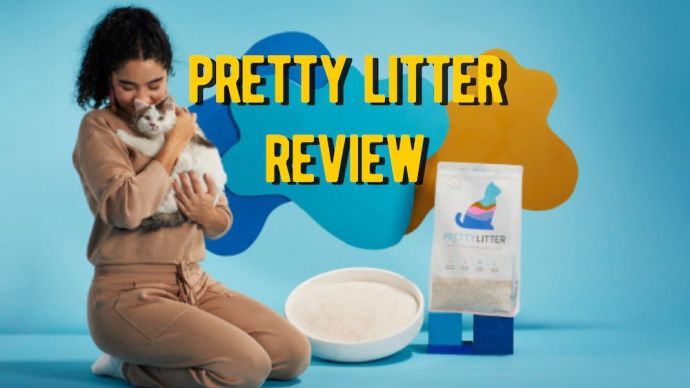 Cat Products & Toys Reviews Pretty Litter Review: Pretty Litter Cat Litter Reviews
Cat Products & Toys Reviews Pretty Litter Review: Pretty Litter Cat Litter Reviews - 452
- 0
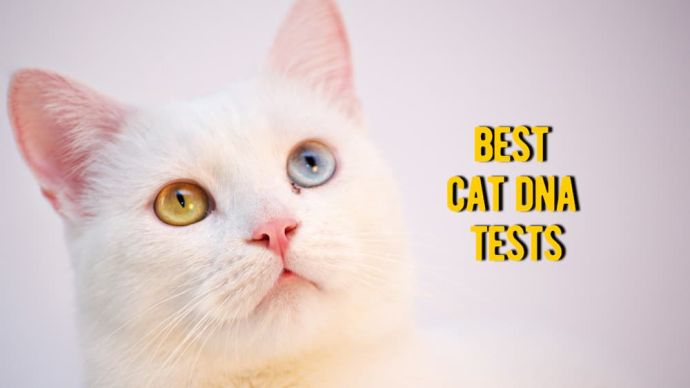 Cat Products & Toys Reviews The Best Cat DNA Tests: Cat Genetic Testing (Review)
Cat Products & Toys Reviews The Best Cat DNA Tests: Cat Genetic Testing (Review) - 247
- 0
 Cat Products & Toys Reviews Best Cat Harness: 10 Best Harnesses for Cats Review
Cat Products & Toys Reviews Best Cat Harness: 10 Best Harnesses for Cats Review - 282
- 2
 Dog Products & Toys Reviews The 10 Best Brush for Australian Shepherd: Review and Buying Guide
Dog Products & Toys Reviews The 10 Best Brush for Australian Shepherd: Review and Buying Guide - 13353
- 0









